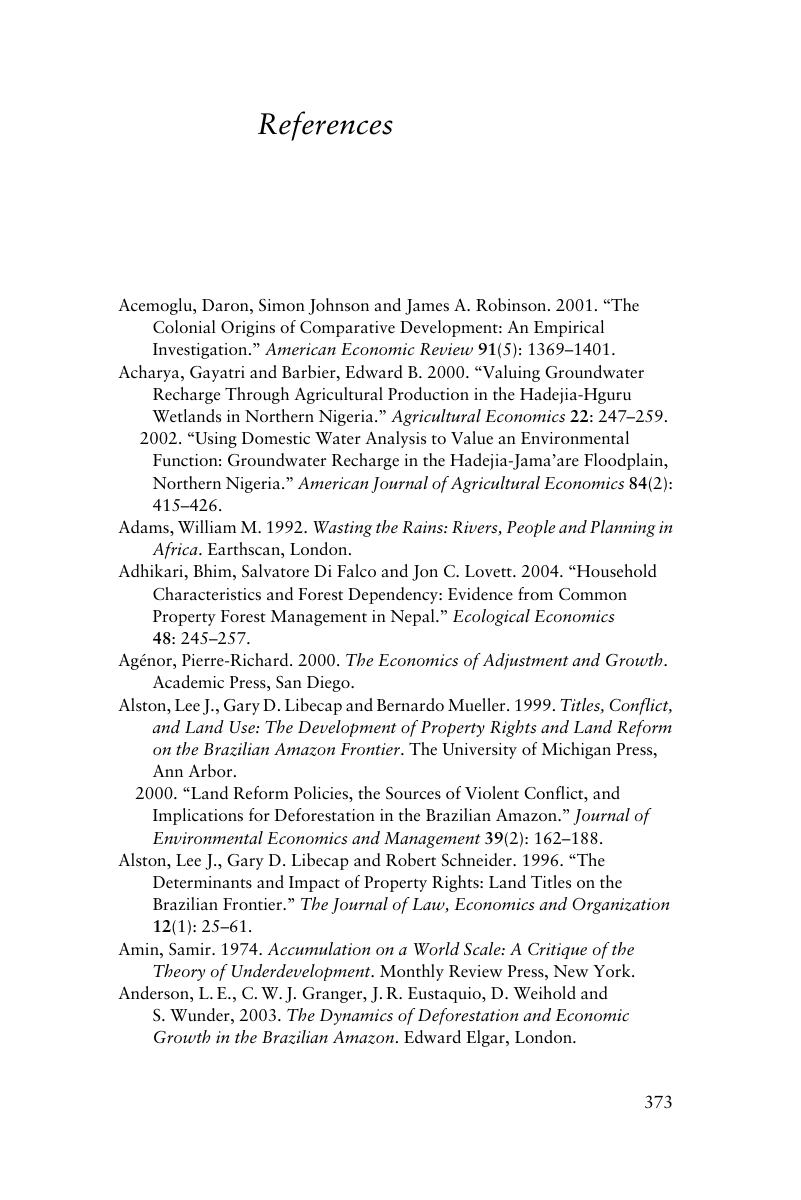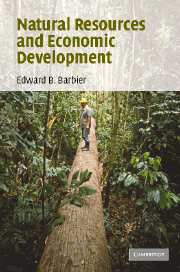Book contents
- Frontmatter
- Contents
- List of figures
- List of tables
- Acknowledgments
- Introduction
- 1 Natural resources and developing countries: an overview
- 2 Natural resource-based economic development in history
- 3 Does natural resource dependence hinder economic development?
- 4 Frontier expansion and economic development
- 5 Explaining land use change in developing countries
- 6 The economics of land conversion
- 7 Does water availability constrain economic development?
- 8 Rural poverty and resource degradation
- 9 Can frontier-based development be successful?
- 10 Policies for sustainable resource-based development in poor economies
- References
- Index
- References
References
Published online by Cambridge University Press: 06 July 2010
- Frontmatter
- Contents
- List of figures
- List of tables
- Acknowledgments
- Introduction
- 1 Natural resources and developing countries: an overview
- 2 Natural resource-based economic development in history
- 3 Does natural resource dependence hinder economic development?
- 4 Frontier expansion and economic development
- 5 Explaining land use change in developing countries
- 6 The economics of land conversion
- 7 Does water availability constrain economic development?
- 8 Rural poverty and resource degradation
- 9 Can frontier-based development be successful?
- 10 Policies for sustainable resource-based development in poor economies
- References
- Index
- References
Summary

- Type
- Chapter
- Information
- Natural Resources and Economic Development , pp. 373 - 400Publisher: Cambridge University PressPrint publication year: 2005



